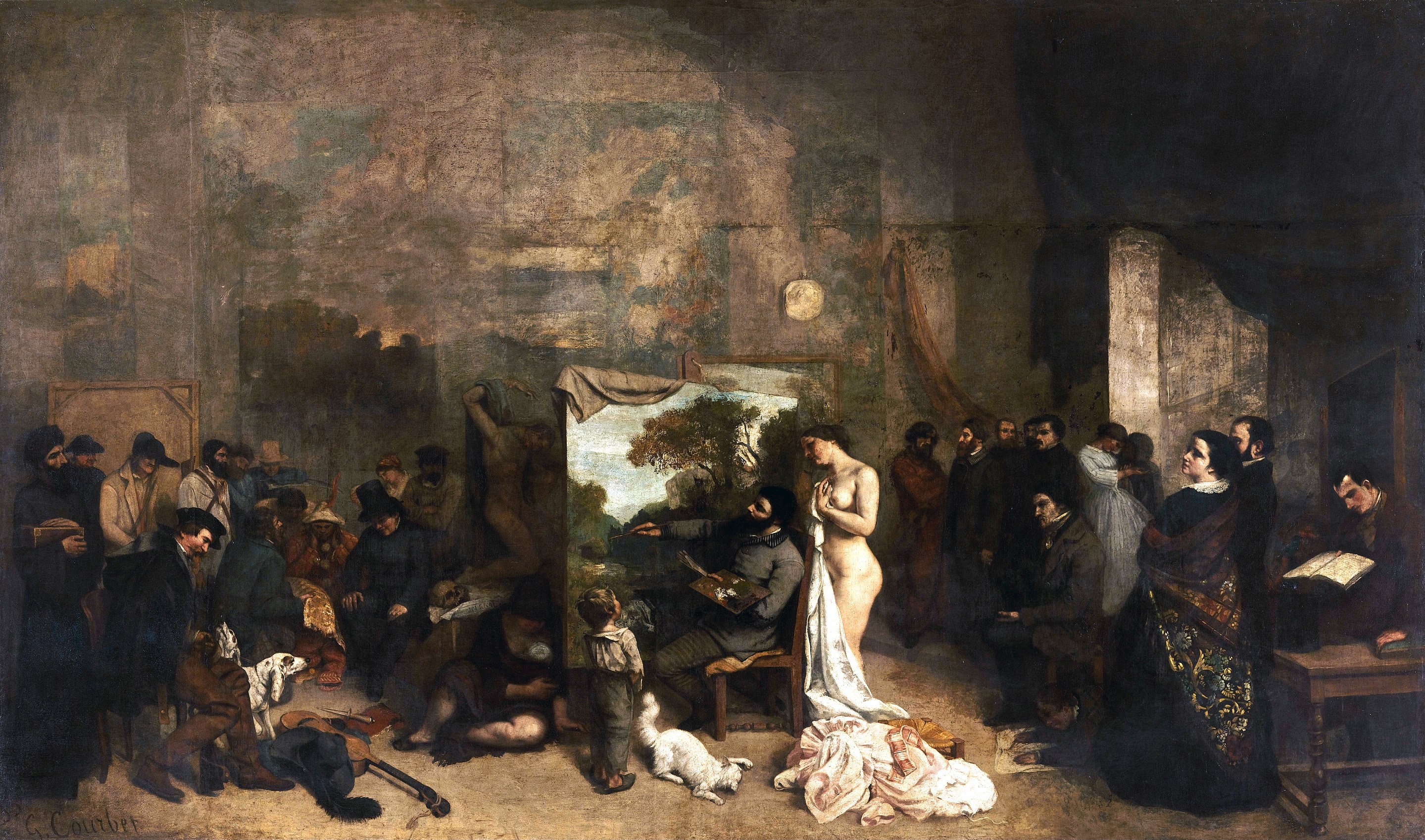
The Avant Garde
I have had to take art and art history classes in each stage of my educational journey: my general educational requirements and first degree major (mass communications), as general education in my new pursuit of studying fashion design, and a source material for that degree. In all of those years, I’ve never really seen the delineation of craftsman and artist that the Invention of the 19th-Century French Avant-Garde illuminated. In this essay, I see a clear marker when those Renaissance craftsmen doing technical work we now consider art were replaced with artists whose vision and message came before the technical achievement.
In a way, Courbet could be considered the first Punk rocker. His view that artists and art needed to rebel against the powers that be and “be at war with the ruling forces of society and at times quite overtly, belligerently, and with obvious relish challenged the Establishment to a head-on confrontation” (Nochlin, 1968). This view that artists were there as a foil to the conservative, religion-based establishment that existed meant that rebelling was really the only way forward in art and science. Artists like Courbet also set the stage for the almost cliché, modern Bohemian view of artists with works like the Painter’s Studio that show an art collective toiling away.
We’ve discussed that the role of artists in society had been changing since exemplified by Dürer’s grand self-portrait. But, now we see artists like Courbet calling for sustained rebellion. We also see artists begin to incorporate social messages into their work, for example The Past, the Present, and the Future by Gleyre. Artists were beginning to speak with one voice for change (even if that voice had many different messages).
Artists continue to do this today. In fact, I would state that today’s art is more symbiotic of the media we have around us. By the mid 19th century, painting was no longer the only way to capture history as the camera and the film emulsion process was being developed. Painters had the freedom to not capture history, reinterpret religious scenes, or try to be as realistic as possible. They could focus on message. Today’s artists are able to take digital media, modern buildings, or even corporate symbols to reinterpret, modify, and elaborate on as commentary with materials everyday people have. Today’s artists are not merely artisans (and some eschew that completely) and focus on message and meaning.
To me, the avant-garde are those ahead of everyone else. They are the artists, scientists, and creators who are ahead of the curve on social sentiment. The avante-garde has pushed digital currency (Bitcoin), human rights (Pride), and new ways to interpret what art is (Banksy). They are unlucky few who don’t see a clear cut path for themselves in modern society and instead laboriously make their own, slow and steady. After some time, society sees what they are doing and either joins them on their path or makes a shortcut that opens the connections between mainstream and the Avant-garde (only to have another avant-avant-garde path being forged).
This was a response to my UMD ARTH201 Class taught by Dr. Abigail Upshaw from Summer 2021.